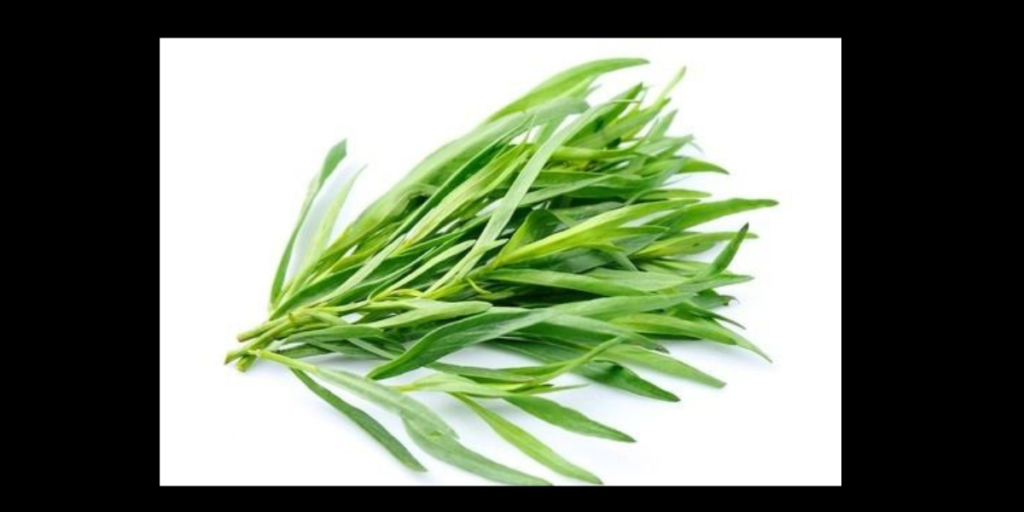Tarragon, known scientifically as Artemisia dracunculus, is a perennial herb widely celebrated for its distinctive flavor and culinary versatility. With its origins tracing back to Eurasia, tarragon has established itself as a staple in various cuisines around the world. This article offers an in-depth exploration of tarragon, covering its history, botanical characteristics, culinary uses, health benefits, and cultivation. By examining these aspects, we aim to provide a thorough understanding of this remarkable herb.
Historical Background of Tarragon
The historical journey of tarragon reveals much about its cultural and culinary significance. Understanding its origins and historical uses provides insight into its importance across different eras.
- Origins and Early Uses: Tarragon is native to Eurasia, with early records indicating its use in ancient civilizations. The herb was cultivated by the Greeks and Romans, who valued it for both culinary and medicinal purposes. Historical texts suggest that tarragon was used in ancient Greek cuisine and was considered an important component in herbal medicine.
- Medieval and Renaissance Periods: During the medieval period, tarragon spread throughout Europe, particularly in France, where it became a key ingredient in traditional French cuisine. In the Renaissance era, the herb was popularized in European gardens and kitchens, becoming a symbol of culinary sophistication.
- Introduction to the Americas: Tarragon was introduced to the Americas by early European settlers. It adapted well to the New World, where it began to be cultivated in various regions. The herb’s introduction to American cuisine added a new dimension to local culinary practices.
- Modern Usage: Today, tarragon is widely used in many cuisines, including French, Italian, and Mediterranean. Its continued popularity reflects its enduring appeal and versatility. The herb is also valued in contemporary herbal medicine and alternative health practices.
Botanical Characteristics of Tarragon
Tarragon’s botanical features are essential to understanding its growth, cultivation, and culinary applications.
- Plant Description: Tarra-gon is a hardy perennial herb with a distinctive appearance. It has slender, lance-shaped leaves that are bright green and aromatic. The plant grows to a height of about 24 to 36 inches and produces small, inconspicuous yellow-green flowers in late summer.
- Varieties: There are several varieties of tarragon, including French tarragon (Artemisia dracunculus var. sativa) and Russian tarragon (Artemisia dracunculus var. inodora). French tarragon is known for its superior flavor and is preferred for culinary use, while Russian tarragon is more robust but has a less intense taste.
- Growing Conditions: Tarr-agon thrives in well-drained soil with a pH level between 6.0 and 7.0. It prefers full sun exposure but can tolerate partial shade. The plant is relatively low-maintenance and can be grown from seeds, cuttings, or divisions.
- Harvesting and Storage: Tarr-agon leaves are typically harvested in the summer when the plant is at its peak. Fresh leaves can be used immediately or dried for later use. To preserve the herb’s flavor, it is recommended to store dried tarragon in an airtight container away from light and moisture.
Culinary Uses of Tarragon
Tarr-agon’s unique flavor profile makes it a versatile ingredient in various culinary traditions. Its applications span from classic French dishes to modern recipes.
- Flavor Profile: Tarr-agon has a distinctive taste that is often described as slightly sweet and peppery with hints of anise or licorice. This unique flavor makes it an excellent addition to a wide range of dishes.
- Classic Dishes: In French cuisine, tar-ragon is a key ingredient in several classic dishes. For example, it is used in Béarnaise sauce, a rich and flavorful sauce made with egg yolks, butter, and tarragon. Tarragon is also used in chicken and fish dishes, such as tarragon chicken and tarragon-infused salmon.
- Salads and Dressings: Tarr-agon adds a refreshing flavor to salads and dressings. It pairs well with ingredients like mustard, lemon, and vinegar, making it a popular choice for vinaigrettes and marinades. Tarragon can also be used to enhance the flavor of potato and pasta salads.
- Herbal Infusions: Tar-ragon is often used to infuse oils and vinegars, adding depth and complexity to these condiments. Tarr-agon vinegar is a popular choice for seasoning and can be used in a variety of dishes to impart a subtle herbal flavor.
- Modern Recipes: Contemporary chefs and home cooks alike use tarr-agon in innovative ways. It can be incorporated into soups, stews, and even desserts, showcasing its versatility. Tarragon pairs well with ingredients like citrus, garlic, and cream, allowing for creative culinary experimentation.
Health Benefits of Tarragon
Beyond its culinary uses, tarr-agon offers several health benefits due to its nutritional content and medicinal properties.
- Nutritional Content: Tar-ragon is a source of essential vitamins and minerals, including vitamins A, C, and K, as well as calcium, iron, and magnesium. These nutrients contribute to overall health and well-being.
- Digestive Health: Tarra-gon has been traditionally used to support digestive health. It is believed to have carminative properties, which may help alleviate bloating, gas, and indigestion. Tarragon tea or infusions are often consumed for this purpose.
- Anti-inflammatory and Antioxidant Properties: Tarr-agon contains antioxidants and anti-inflammatory compounds that may help reduce oxidative stress and inflammation in the body. These properties are beneficial for overall health and may support the immune system.
- Antimicrobial Effects: Some studies suggest that tarra-gon may have antimicrobial properties, which could help inhibit the growth of certain bacteria and fungi. This makes it a useful herb for promoting a healthy microbial balance in the body.
- Traditional Medicine: In traditional medicine, tarra-gon has been used to treat a variety of ailments, including respiratory issues, menstrual discomfort, and skin conditions. While modern research is still exploring these uses, tarragon’s historical applications highlight its potential medicinal value.
Cultivating Tarragon
Growing tarra-gon can be a rewarding experience, whether for culinary use or ornamental purposes. This section provides guidance on cultivating tarragon successfully.
- Planting: Tarra-gon can be grown from seeds, cuttings, or root divisions. Seeds should be sown in well-drained soil, either indoors or directly in the garden. Cuttings and divisions are typically planted in spring or fall. Ensure that the planting site has adequate sunlight and well-drained soil.
- Care and Maintenance: Tarra-gon requires minimal maintenance once established. Regular watering is important, especially during dry periods, but avoid waterlogging. Fertilization is not usually necessary, but occasional feeding with a balanced fertilizer can promote healthy growth.
- Pests and Diseases: Tarr-agon is relatively resistant to pests and diseases. However, watch for common issues such as aphids, spider mites, and fungal infections. Implementing proper gardening practices, such as good air circulation and avoiding overhead watering, can help prevent these problems.
- Harvesting: Harvest tarragon leaves regularly to encourage new growth. The leaves can be used fresh or dried for later use. For the best flavor, harvest the leaves before the plant begins to flower. In regions with harsh winters, tarr-agon can be grown in pots and brought indoors during the colder months.
- Preservation: To preserve tarr-agon for extended use, consider drying or freezing the leaves. Drying involves hanging the leaves in a well-ventilated area away from direct sunlight. For freezing, chop the leaves and store them in an airtight container or ice cube trays.
Tarragon in Culinary Culture
Tarragon holds a significant place in various culinary cultures, each utilizing the herb in unique ways.
- French Cuisine: In French cuisine, tarragon is revered for its role in classic sauces and dishes. It is a key ingredient in Béarnaise sauce, a rich accompaniment for steak and other meats. Tarr-agon is also used in French herb blends, such as fines herbes, which combine tarragon, chives, parsley, and chervil.
- Mediterranean Cuisine: Mediterranean cuisines, including Italian and Greek, incorporate tarragon in various dishes. In Italian cooking, tarr-agon is used to flavor pasta sauces, meats, and seafood. Greek cuisine features tarragon in salads and marinades, contributing to the fresh and vibrant flavors characteristic of Mediterranean dishes.
- American Cuisine: In American cuisine, tarr-agon is used to add a distinctive flavor to salads, dressings, and marinades. Tarr-agon chicken, a popular dish, showcases the herb’s ability to enhance poultry dishes with its aromatic and slightly sweet taste.
- Global Variations: Different cultures around the world have embraced tarragon in their culinary traditions. For example, in Eastern European cuisines, tarr-agon is used in pickling and preserving vegetables. Its versatility allows it to adapt to various flavor profiles and regional preferences.
Challenges and Considerations
Despite its benefits, there are some challenges and considerations to keep in mind when using or growing tarr-agon.
- Flavor Intensity: Tarr-agon’s strong flavor can be overpowering if not used carefully. It is important to balance its taste with other ingredients to avoid overwhelming the dish. Experimenting with different quantities and combinations can help achieve the desired flavor profile.
- Allergies and Sensitivities: Some individuals may have allergies or sensitivities to tarragon. It is advisable to test for any adverse reactions before incorporating it into regular use. If any discomfort or allergic reactions occur, discontinue use and consult a healthcare professional.
- Cultural Variations: Different varieties of tarragon, such as French and Russian, have varying flavor profiles. Understanding these differences is crucial when selecting the appropriate type for specific recipes or culinary applications.
- Pest Management: While tarr-agon is generally resistant to pests, gardeners should remain vigilant for potential issues. Regular inspection and proper care can help prevent pest infestations and ensure healthy plant growth.
Conclusion
Tarragon, with its rich history, unique flavor, and diverse applications, remains a valuable herb in both culinary and medicinal contexts. Its origins, botanical characteristics, culinary uses, health benefits, and cultivation methods all contribute to its significance. As tar-ragon continues to be embraced by chefs and home cooks worldwide, its role in enhancing flavors and supporting health will likely endure. Understanding and appreciating tarragon’s multifaceted attributes allows us to fully utilize and enjoy this remarkable herb in various aspects of our lives.







